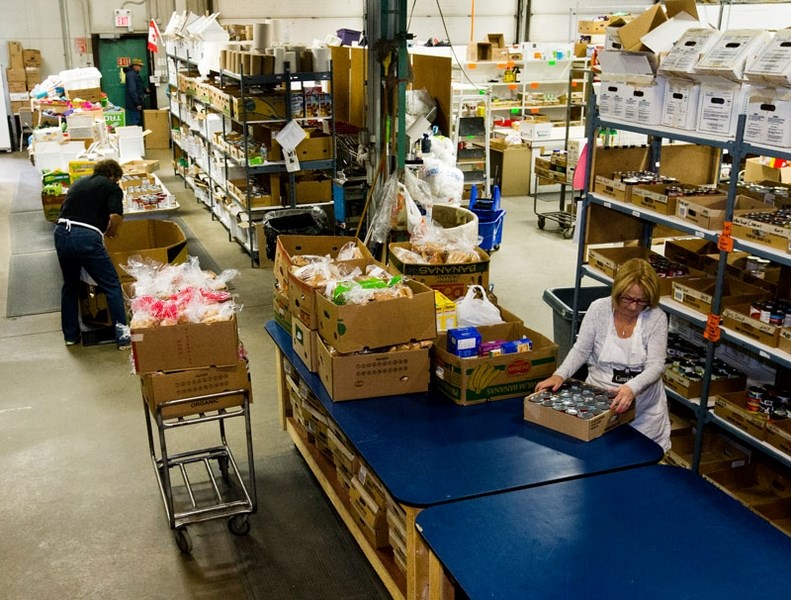Food banks across the country released their annual HungerCount report last week. In national food bank usage statistics Alberta placed second for food bank usage across the board but the picture is incomplete.
There were 79,293 people who were assisted by a food bank anywhere in the province but the annual survey is conducted only during March, explained Food Banks Alberta director Stephanie Rigby. That information is missing a rather large chunk of what happened in the province after May 1.
“The fire happened after this count. From our perspective, it makes this data a little more disturbing because we know that food bank usage continued to rise after the fire and into the fall. We’re quite confident, sadly, that the numbers in Alberta are higher than 80,000 per month,” she said.
“I think the scarier part for me is the number. The fact that we are hovering just below 80,000 people accessing a food bank in a month is worrisome because it’s the highest number we have on record.”
Because of the Fort McMurray/Wood Buffalo wildfire, she said that there was an immediate surge and sustained impact of at least one or two months where many of that area’s approximately 90,000 evacuated residents made use of a food bank somewhere in the province on at least one occasion.
“Every single food bank is up. I would not be surprised if our numbers continued to rise into 2017, which is a bleak outlook.”
There were collectively 863,492 people who received food from any food bank in Canada during that one-month period. That figure is 1.3 per cent higher than the 2015 HungerCount, and 28 per cent higher than in 2008.
In Alberta, those figures jump more than 17.5 per cent from 2015 to 2016 and a whopping 136.1 per cent from 2008 to the current year. The province that experienced the closest rate of growth during that timeframe was Saskatchewan but it only saw a 76.9 per cent increase.
Rigby says that it’s impossible to understate the impact that the economy has. Even though there are some signs of recovery, the economy is still weak and many people are feeling the pinch as more of a punch.
“The cost of housing is incredibly high, especially in St. Albert. Food and other consumer goods are all very high cost but the income isn’t there to join it. What we’re seeing is people that have been laid off or maybe they’re running out of EI or they’ve taken lower paying jobs to try to make ends meet. They simply cannot afford all of the components of living.”
She noted that 34 per cent of food bank recipients in this province are aboriginal or First Nations, a figure that rises to 64 per cent for our rural food banks.
“There’s a huge issue happening with our First Nations communities having access to food and it’s worrisome to see that number continue to grow.”
Rigby also added that a full quarter of food bank recipients are employed.
Food Bank Use in Canada by the Numbers: March 2016
Alberta <br />79,293 people<br />39.4% children<br />+17.6% from 2015<br />+136.1% from 2008<br /><br />Saskatchewan<br />31,395 people<br />45.2% children<br />+17.5% from 2015<br />+76.9% from 2008<br /><br />Ontario<br />335,944 people<br />33.4% children<br />-6.4% from 2015<br />+6.9% from 2008<br /><br />Nova Scotia<br />23,840 people<br />30.4% children<br />+20.9% from 2015<br />+40.9% from 2008<br /><br />Canada <br />863,492 people<br />35.6% children<br />+1.3% from 2015<br />+27.8% from 2008<br /><br />More than 200 million pounds of food given out annually.<br /><br />Eight out of 10 provinces, plus all three territories, experienced increases from 2015.<br /><br />Nationally, 1 in 6 households receiving food bank assistance are currently or recently employed, almost 1/5 are on disability-related income supports, 45% are on social assistance, and 8% live on a pension.<br /><br />Figures from Food Banks Canada HungerCount 2016




